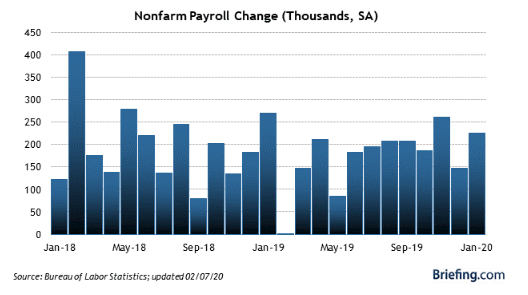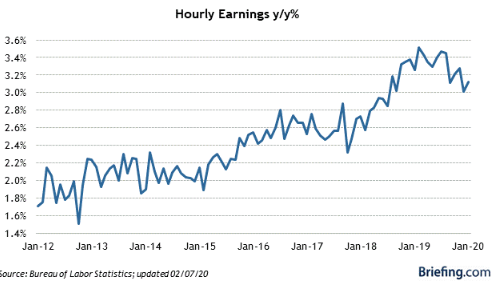US Nonfarm Payrolls Surged In January, Unemployment Continues At A 50 Year Low
US firms added a robust 225,000 new payroll jobs in January even though the economy faces threats from China’s viral outbreak, trade war problems, and struggles at Boeing. There was only a gain of 147,000 in the previous month. However, over the past three months, payroll jobs increased at an unusually high 211,000 average monthly rate.
The January payroll increase was bolstered by a sizeable 44,000 increase in construction jobs and 174,000 jobs in the service-producing industries.
The US labor force participation rate increased 0.2 percentage points to 63.4% in January and the unemployment rate rose slightly to 3.6% compared to 3.5% in the previous month. Nonetheless, the American unemployment rate is still at a 50-year low level.
Ironically, based on the American survey of households, the number of unemployed people increased by 139,000 in January to 5.89 million, while employment declined by 89,000 to 158.71 million.
In other words, it is often difficult to resolve the major employment differences reported by the two different surveys. In January payroll employment increased by 225,000, whereas under the household survey employment declined by 89,000.
The broader U6 unemployment rate, which includes both unemployed and underemployed workers, was 6.9% in January compared to 6.7% in December.
Despite the brisk pace of hiring in January, average hourly earnings rose only 3.1% from a year earlier, below the 3.5% peak reached last fall, though still above the CPI inflation rate. Average hourly wages increased 2.9% over the 12 months ending in December.
From an aggregate perspective, the important conclusion is that the US job market is still expanding at an unusually rapid pace early in 2020. However, money wage gains and real wage increases are still relatively weak for an economy which otherwise appears to be performing quite well.
Obviously, the weak CPI inflation and wage numbers should not provoke the Fed to raise interest rates anytime soon.
As well, the US economy only grew by 2.3% in 2019, the slowest performance in three years after recording 2.9% growth in 2018.
Most economists expect US real growth to run about 2% this year. As well, the US job market is slowing down, since the job gains last year was only 2.1 million, the lowest total increase since 2011.





